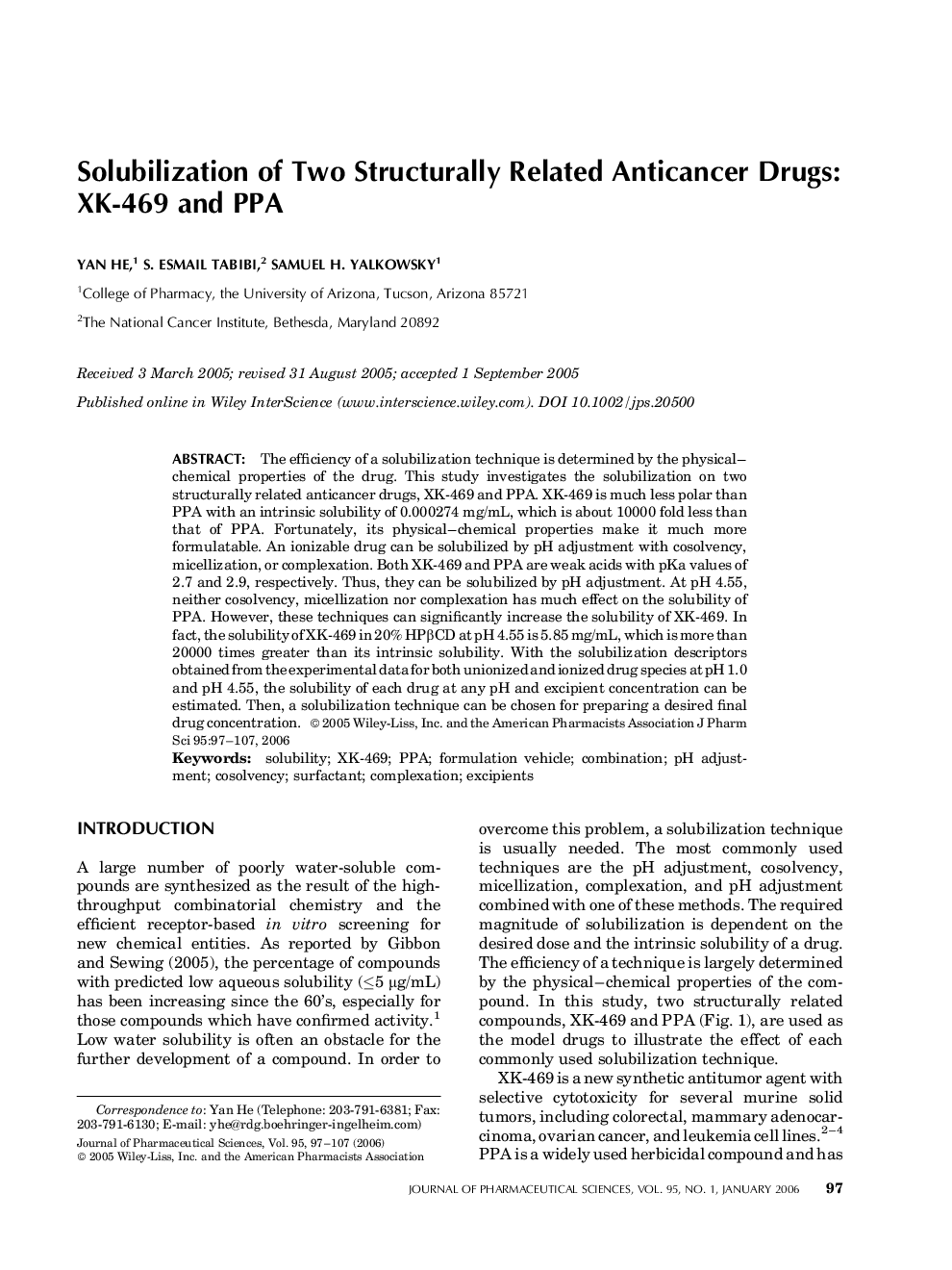| Article ID | Journal | Published Year | Pages | File Type |
|---|---|---|---|---|
| 2486304 | Journal of Pharmaceutical Sciences | 2006 | 11 Pages |
Abstract
The efficiency of a solubilization technique is determined by the physical-chemical properties of the drug. This study investigates the solubilization on two structurally related anticancer drugs, XK-469 and PPA. XK-469 is much less polar than PPA with an intrinsic solubility of 0.000274 mg/mL, which is about 10000 fold less than that of PPA. Fortunately, its physical-chemical properties make it much more formulatable. An ionizable drug can be solubilized by pH adjustment with cosolvency, micellization, or complexation. Both XK-469 and PPA are weak acids with pKa values of 2.7 and 2.9, respectively. Thus, they can be solubilized by pH adjustment. At pH 4.55, neither cosolvency, micellization nor complexation has much effect on the solubility of PPA. However, these techniques can significantly increase the solubility of XK-469. In fact, the solubility of XK-469 in 20% HPβCD at pH 4.55 is 5.85 mg/mL, which is more than 20000 times greater than its intrinsic solubility. With the solubilization descriptors obtained from the experimental data for both unionized and ionized drug species at pH 1.0 and pH 4.55, the solubility of each drug at any pH and excipient concentration can be estimated. Then, a solubilization technique can be chosen for preparing a desired final drug concentration. © 2005 Wiley-Liss, Inc. and the American Pharmacists Association
Keywords
Related Topics
Health Sciences
Pharmacology, Toxicology and Pharmaceutical Science
Drug Discovery
Authors
Yan He, S.Esmail Tabibi, Samuel H. Yalkowsky,
